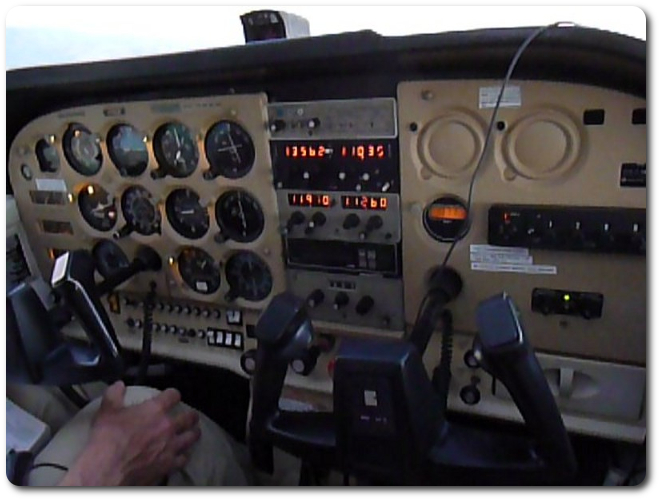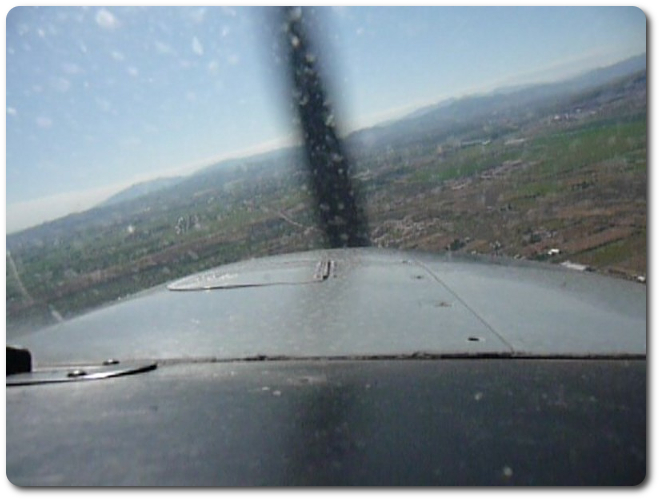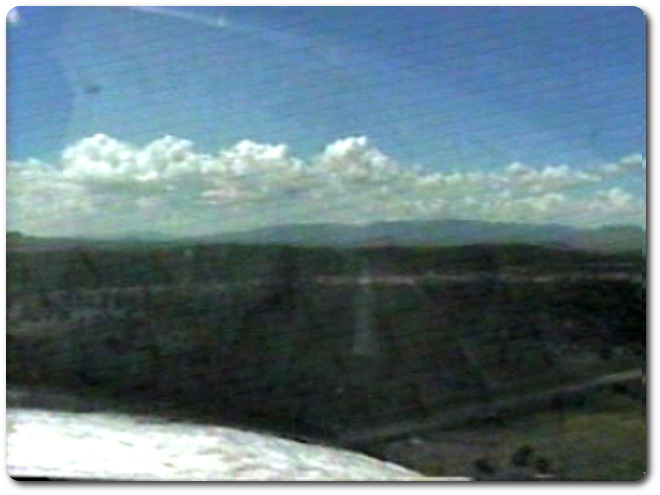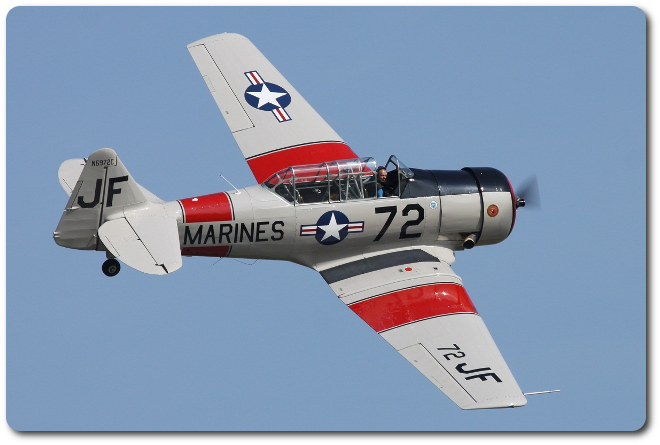Flight-Dynamics Model (and Miscellaneous Flying)


|
|
An evening flight later in the summer, with Pocatello in the background. I'm the safety pilot tonight in the right seat. So what am I doing? Taking pictures...
|

|
|
A completely uninteresting video of a 360-degree steep turn at 45 degrees to the right. Students usually lose control doing these, especially to the right, and the nose bobs all over the place. Mine is pretty stable for a change. Now 60-degree banks (borderline not legal without a parachute) are more fun. Ninety degrees is impossible to hold, but it's a blast.
|

(video 8 MB)
|
|
Jim's approach (no sound) on the ILS (Instrument Landing System). On a 10-mile final, there's a whole lot of nothing going on, at least from the camera's perspective. Jim doesn't have a perspective because he's wearing goggles that don't let him see anything but the instrument panel. I, on the other hand, get to relax for a change and look around (although I'm supposed to be looking around for things he might hit).
|

(video 23 MB)
|
|
One of my solo landings, making right traffic for Pocatello runway 21. I did about 10 of these an hour intentionally Goldilocks-style: too high, too low, too far, too short, etc. There's nothing smooth about an approach in gusty conditions. All those gyrations are necessary compensations, but the whole time, the path to the aimpoint (the striped boxes on the runway) and the touchdown point (the solid white boxes) never varies in three dimensions or speed. You can see similar cockpit movements in Jim's video above.
|

(video 13 MB)
|
|
Part of the flight-dynamics perspective I'm trying to show is what happens when things don't go right. In this case, I'm trying really hard to get this plane to stop flying, but it refuses to stall. Under normal circumstances, this is a great property, and it's definitely why the Cessna 172 is the world's most popular trainer. But here, I'm fighting really hard behind the scenes. I finally get the upper hand around 2/3 through, and at the end, it finally breaks -- gently. Doing this is other planes is far more spectacular (especially with uncoordinated flight controls).
|

(video 15 MB)
|
|
This is actually the weekend before 9/11 out near Magdalena, New Mexico on the San Augustin Plains. I met up with my ballooning team and led sightseeing flights over the Very Large Array. Oh yeah, I also delivered pizzas in the cargo hold. N8534T was an old ranch plane I co-owned: big tires and great off-field landing capability. Flew like a tractor with the throaty roar of a P51. The touchdown comes really fast on a runway that narrow (~20 feet usable) unlike on the 150-foot one in the Pocatello video above where the plane looks like it's taking all day. I like the comments on the airport, in particular the small-arms fire to the west up to 2,000 feet in the air (?) and the runway is firm with some large rocks (!).
|

(video 42 MB)
|
|
A soft-field takeoff. The goal is to get the wheels off the ground as soon as possible, well before the plane is actually capable of flying on its own, then hover a foot or so above the runway until it accelerates enough to fly for real. Of course, this "runway" slopes up and down for added fun. Plus the airport is at about 6,700 feet, and this takeoff was in the hot afternoon, so performance wasn't as good.
|

(video 10 MB)
|
|
The GPS track from that trip.
|

|
|
The little roundabout path toward the top left is the Very Large Array, which I flew over several times with members of the balloon crew.
|

|

|
|
The rest of these entries are just eye candy, not necessarily related to any research. Someday I'll have a dedicated flying page set up.
|
|
Here's a 1944 T-6 Texan, just gorgeous to look at, and even better doing tons of aerobatics.
|

|

|
|
This isn't me or even the same plane in the picture (extremely close, though), but it's a good example of how you can really enjoy the experience with the canopy open. But it's closed during aerobatics. After individually doing all these maneuvers myself for a while, my instructor did them all together while I got the video.
|

(video 27 MB)
|
|
A 1937 DC-3 I deadheaded on (and flew part of the way) from Spokane to Seattle, two flights in total.
|

(video 14 MB)
|
|
You can't beat the itinerary: landing at Boeing Field, visiting the Museum of Flight, then hopping the train back to Spokane.
|

|


|
© 2025 Dan Tappan and Eastern Washington University
— last updated 9 Apr 2025 15:44